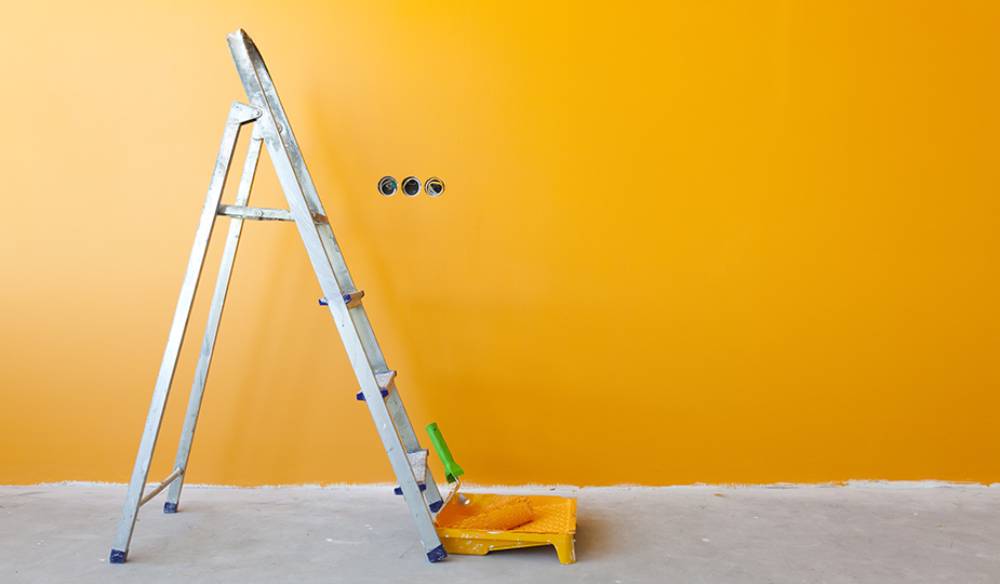When embarking on the journey of a home remodelling, you are bound to find yourself prying open a fresh tin of paint. Before you start coating the walls in favourite colour, it’s good to know a bit about paint and the difference between interior and exterior paint.
At its very core, Interior and exterior paints have largely different purposes and they have been formulated accordingly. While interior paint is meant to resist stains, should be able to be scrubbed and permit cleaning, exterior paint is a different ball game altogether – it should be able to fight moisture and fading.
As clearly seen their properties are formulated to carry out different functions altogether. So, choosing paint correctly is a pivotal point. This will require that we delve deeper into the chemistry that goes on in creating these paints and the integral components that they entail.
The Basics Come First
While there may be several subtle differences when it comes down to these kinds of paints – the primary and the most important factors remain off-gassing and durability. You have to understand that interior and exterior paint are subjected to completely different treatments – exterior painting gets rained on, has to undergo different climatic changes and it has to do all of that without the risk of getting peeled or chipped in the process.
Right from summer and winter harshness, it has to withstand it all, so durability is a very important feature that it must have. On the other hand, even though interior paint does not have to have such strong durable capacity, it does need to have the capacity to bear the everyday wear and tear drill that comes under its domain.
Summing up, the choice of resin is the main thing that differentiates between the two – resin being the component that causes the binding of the paint to the surface where it is applied. Because exterior paint needs to be the tougher paint of the two where it must survive temperature fluctuations, the resins that are used in binding exterior paints are softer in nature.
Alternatively, since interior paint does not have to react to such temperature changes, the binding resins are made to be more rigid in nature, which lower the occurrences of smearing and scuffing.
Also, typically, interior paint comes with reduced levels of VOCs, also known as volatile organic compounds. These compounds come with quite a few unpleasant attributes which can cause a havoc of reactions – eye, nose and throat irritations, breathing troubles, damage to the central nervous system and organs and in some cases, even cause cancer. So, without a doubt, you would not want these compounds thriving in your wall paints.
A Small Lesson on Paint Chemistry
Having a basic idea about paint will help you gauge the difference between interior and exterior paint better. As already known, paint is supposed to cover a wide range of surface types, right from drywall, metal to wood. Inherently, it is a concoction of pigments, resins, solvent and additives.
The solvent is the component on which these chemicals float about giving paint its wet texture. When the paint is rolled onto a surface, solvent evaporation occurs, with the solids left behind. The resin, the binding agent, binds the pigment to the surface giving it the colour.
The role of additives is to make the paint moisture-resistant, easily cleanable and quick to dry.
Oil and Latex Differences
Mostly, oil-based paint is made from oil(typically linseed) or alkyd(a kind of resin). VOC levels in this type of paint is high and it can continue to off-gas for many years. For this reason alone, some states have prohibited it from getting used for indoor work, and its use has been limited for exterior trim and woodwork only.
Latex is a mix of natural or synthetic latex and acrylic plastic. It is water-soluble in nature in both hard and flexible types with low VOC levels making it an easy first choice for both interiors and exteriors.
Interior and Exterior Latex Differences
Exterior latex comes with heavyweight binders and additives which are made in a way that can combat extreme temperatures. The coating comes much thicker than its interior latex counterpart.
As an exact opposite, interior latex comes without these heavy additives, and will not be able to tolerate super high and super low temperatures. It would fade much more quickly, and the quality will worsen soon enough mandating frequent re-painting.
Of course, while choosing the right paint type and colour gets you off in the right direction on your remodelling journey, we should be environmentally conscious in the choices we make regarding interior or exterior design.






